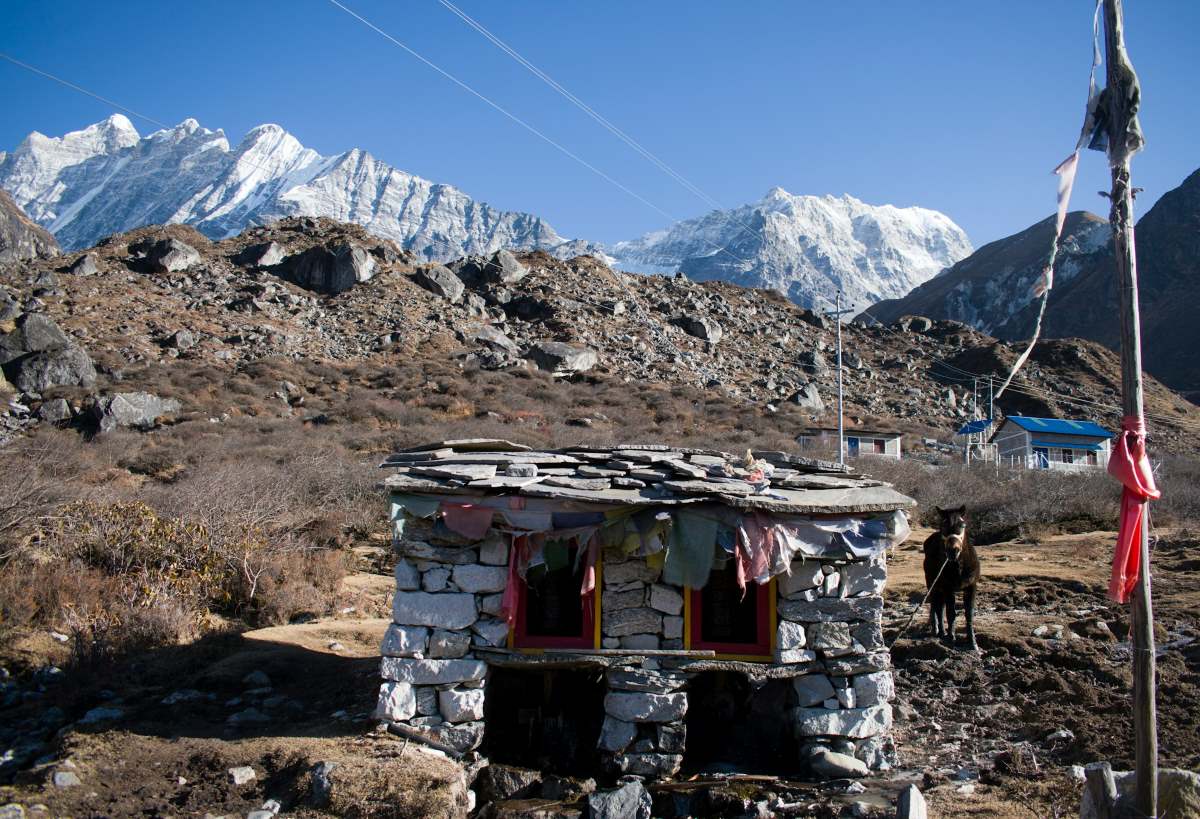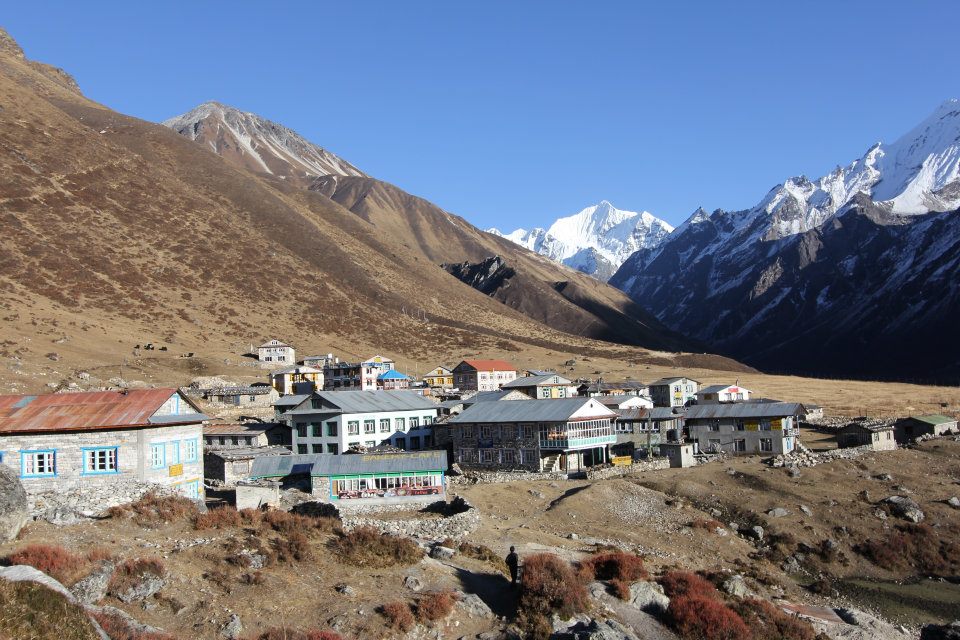Exploring the Hidden Gem of Nepal: The Langtang Valley Trek
Langtang trek is nestled in the Himalayas , which you can go from Kathmandu. This trek is popular among various trekkers as in this trek they are able to see stunning natural landscape , various cultural aspect of the people living in that community . Langtang trek may be less popular than the famous routes of Nepal like Everest and Annapurna , but this trek is perfect for those who are seeking for less day trek, with less crowd on trek season in comparing to Everest and Annapurna. This trek spans on 77 Km and usually takes around 7 to 8 days according to the speed which you are comfortable to walk. This trek is accessible to all trekkers and it has its own unique aspect for Travellers to enjoy.
Why Choose the Langtang Valley Trek?
One of the things that makes Langtang trek attractive that its is near from Kathmandu than other treks . Therefore it requires on domestic flights , and you can get to the starting point to trek by driving around 7 to 8 hours . This trails lies in Langtang National Park which was established in 1976 ad. It was established mainly to protect diverse ecosystem which can be found in that region in addition to that subtropical forests and alpine meadows as well. Mostly people of Tamang cast live there , most of the culture are Tibetan influenced therefore you can see similar culture and structure as you can see on Tibet. Most of the village in that region was destroyed in devastating 2015 earthquake in Nepal therefore all community are working together to rebuild their village in anyway they can .You can find teahouse during this trek where you can rest and get meal along the way this trek . Langtang trek is ideal for trekkers who are just beginning on there trekking journey .

Itinerary of Langtang trek
Langtang trek spans around 8 days , this trek starts from Kathmandu . Here is the overview of this trek
Day 1 :Arrival at Kathmandu airport
You will met our staff and will be transferred to the hotel by private tourist vehicle . You will stay hotel overnight on BB plan.
Day 2: Kathmandu to Syabru Bensi
On the second day of your trip, we’ll drive to Syabru Besi by a local bus. Enjoy the countryside view and natural beauty of Nepal on the way. Your overnight accommodation will be at a local lodge, and we’ll continue our journey tomorrow.
Day 3:Syabru Bensi to Lama Hotel (walking 5 hours)
Start your trek early in the morning. You’ll walk for around 5-6 hours today. Enjoy your trek with fascinating mountain views and greenery along the way. Today you’ll stay at Lama Hotel, where the villagers will be welcoming you with a gentle smile on their faces.
Day 4:Lama Hotel to Langtang village. (Walking 5 hours)
Today you’ll hike up to beautiful Langtang village where the villagers will welcome you with swift smiles. The hike will be 5-6 hours long today as well. Enjoy the authentic local food and culture of Langtang village, where you’ll stay the night at a local lodge.
Day 5:Langtang village to Kyanjin Ri (4773m/ 14526ft) and back to Kyanjin Gompa. (Walking 6 hours)
You’ll have to walk a long way today, so we’ll start early in the morning and hike up to Kyanjin Ri (4,700m/15,416ft), which is the highest point of our trek.
Enjoy the mountain views and the unique landscapes of the surroundings and Kyanjin Rii. We’ll hike back to Kyanjin Gompa where we’ll stay the night in a local lodge.
Day 6: Kyanjin Gompa to Lama hotel (walking 5:30 hours)
Today you’ll hike back from Kyanjin Gompa to Lama Hotel. You’ll walk for 6-7 hours today. Enjoy the greenery along the way with different wildlife encounters.
Day 7:Lama Hotel to Syabru Besi (Walking 5:30 hours).
Today you’ll hike back to your first starting point Syabru Besi. Enjoy the walk with different wildlife encounters and mesmerizing mountain views. You’ll stay your night at a local lodge in Syabru Besi.
Day 8:Syabru Besi to Kathmandu by drive. (Driving 6 hours)
Today you’ll be back to Kathmandu by bus or jeep, and you’ll be transferred back to your comfortable 3 stars accommodation.
Total elevation gain is around 3,925m, with daily walks of 4-8 hours.
Preparation and Difficulty Level
This trek is rated as moderate difficulty among various trek rotes in Nepal. This trek can be done by people who have basic fitness resume on their life . On this trail you have to usually walk around 5 to 7 hour daily on trek . Therefore it is recommend to you to do basic cardio and some strength training exercise for this trek. This trek can be done by trekkers who want to gain some experience of trekking but you also need to do some cardio exercise on your free time so you will not experience and difficulty while on this trek.
Best Time to Embark
Most of the trekkers plan on going o n this trek during spring (March- May) and autumn ( September- November . During this season the weather is mid , with clear skies as well which makes it favorable for trekkers to trek. In addition to that trekkers can also get view of beautiful rhododendrons along the trial. I would recommend to avoid monsoon region as it is very rainy which can cause landslide making it hard for you to trek.
Must-See Highlights and Experiences
- Natural Wonders: Trek through rhododendron forests, past glaciers, and spot wildlife like red pandas, snow leopards, and Himalayan pheasants in the park’s 1,710 sq km.
- Cultural Immersion: Visit Kyanjin Gompa, interact with Tamang locals, and try yak cheese from the factory.
- Views Galore: Jaw-dropping panoramas of peaks like Langtang Lirung, Dorje Lakpa, and even Shishapangma across the Tibetan border.
- Unique Touches: Extend to sacred Gosainkunda Lakes or Yala Peak for climbers.
Stay in cozy teahouses with hot meals, Wi-Fi (for a fee), and warm hospitality.
Budgeting Your Adventure
Costs range from $450-$800 per person for groups of 2+, dropping with larger groups. Inclusions typically cover permits (Langtang National Park ~$30, TIMS ~$20), guide, meals (full board on trek), teahouse stays, transport, and basics like airport transfers. Extras: Insurance, porters, private jeeps (~$170-240 one way), tips, and personal snacks. Vegetarian/vegan options are available.
Essential Tips for a Smooth Trek
- Get travel insurance covering high-altitude evacuation.
- Drink plenty of water and watch for AMS symptoms.
- Respect local customs—remove shoes in monasteries and ask before photographing people.
- Pack eco-friendly: Use reusable water bottles to minimize plastic.
- Book with reputable operators for licensed guides and eco-practices.
- If solo, note the new guide requirement for safety.
The Langtang Trek is a popular and rewarding journey in the Himalayas. Here’s what you need to know:

Duration and Distance
The Langtang trek typically takes 5-7 days to complete, covering approximately 77 km (48 miles). This distance includes the ascent to Kyanjin Ri peak. If you choose to add side treks, such as to Tserko Ri Peak from Kyanjin Gompa, you’ll add around 8 km to your total distance.
Difficulty Level
The Langtang Valley trek is considered moderately difficult. Most individuals in good physical shape should be able to complete it. It’s generally less challenging than more well-known treks like the 12-day Everest Base Camp or Annapurna Base Camp, making it a good choice for those with some prior hiking experience.
Best Time to Trek
The autumn season, from September to mid-December, is ideal for the Langtang trek. During this period, the weather is typically warm and stable, offering clear blue skies, fresh air, and excellent views of the Himalayan Mountains.
Views of Everest
While you’ll be immersed in the stunning Langtang Himalayan range, you cannot see Mount Everest from the Langtang Valley. The primary viewpoints, like Kyanjin Ri, offer magnificent panoramic views of the Langtang ranges, often described as the “Kala Patthar of Langtang” due to their exceptional vistas of the local peaks.
Permits Required
Yes, you need a Langtang National Park entry permit to undertake the trek. This permit is also valid if you plan to extend your trek to include the Langtang Gosaikunda route.
Training for the Trek
To prepare for the Langtang Valley trek, focus on aerobic conditioning, elevation training, and strength endurance. Incorporate exercises such as:
- Aerobic Exercises: Swimming, running, cycling, and fast-paced walking.
- Strength and Endurance: Jump squats, hip rolls, step-ups, heel downs, and hip clocks.
Consistent training will help you build the necessary stamina and strength to enjoy the trek to its fullest.
Final Thoughts
The Langtang Valley Trek isn’t just a hike; it’s a journey into Nepal’s soul—resilient, beautiful, and welcoming. Whether you’re chasing mountain vistas or cultural connections, this trek delivers without the crowds. If you’re planning a Himalayan escape, Langtang should top your list. Lace up those boots and embark on an adventure that lingers long after the trails end!






